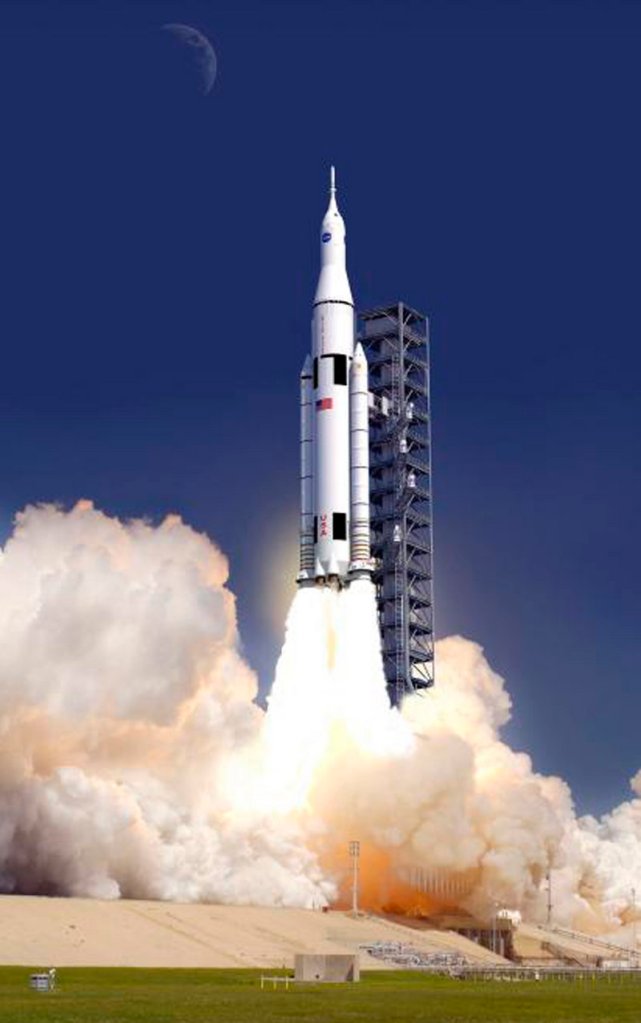WASHINGTON – To soar far away from Earth and even on to Mars, NASA has dreamed up the world’s most powerful rocket, a behemoth that borrows from the workhorse liquid-fuel rockets that sent Apollo missions into space four decades ago.
But with a price that some estimate at $35 billion, it may not fly with Congress.
NASA Administrator Charles Bolden and several members of Congress on Wednesday unveiled the Obama administration’s much-delayed general plans for its rocket design, called the Space Launch System.
The multibillion-dollar program would carry astronauts in a capsule on top, and the first mission would be 10 years off if all goes as planned. Unmanned test launches are expected from Cape Canaveral, Fla., in six years.
Calling it the “largest, most powerful rocket built,” NASA’s exploration and operations chief, William Gerstenmaier, said the rocket will be tough to construct. But when NASA does it, “we’ll have a capability to go beyond low-Earth orbit like no other nation does here on Earth,” he said in a telephone briefing Wednesday.
The rocket resembles those NASA relied on before the space shuttle, but even its smallest early prototype will have 10 percent more thrust than the Saturn V that propelled Apollo astronauts to the moon. When it is built to its fuller size, it will be 20 percent more powerful, Gerstenmaier said. That bigger version will have the horsepower of 208,000 Corvette engines.
NASA is trying to remain flexible on where it wants to go and when. The space agency is aiming for a nearby asteroid around 2025 and then on to Mars in the 2030s. There could even be a short hop to the moon, but not as a main goal. All those targets require lots of brute force to escape Earth’s orbit, something astronauts have not done since 1972.
The far-from-finalized cost may be too steep given federal budget constraints.
“Will it be tough times going forward? Of course it is,” Sen. Bill Nelson, D-Fla., said in a separate news conference. “We are in an era in which we have to do more with less — all across the board — and the competition for the available dollars will be fierce. But what we have here now are the realistic costs” verified by independent experts.
Although five senators of both parties who are leaders in science issues praised the plan in a joint news release, outside experts are skeptical that Congress will agree to such a big spending project.
“In the current political environment, new spending is probably the most taboo thing in politics,” said Stan Collender, a former Democratic congressional budget analyst.
He put the odds of this getting congressional approval at “no better than 50-50 this year. There are going to be a lot of questions asking what kind of commitment we’re going to be making here. You can find yourself with a rocket that no one wants to fire.”
Send questions/comments to the editors.



Success. Please wait for the page to reload. If the page does not reload within 5 seconds, please refresh the page.
Enter your email and password to access comments.
Hi, to comment on stories you must . This profile is in addition to your subscription and website login.
Already have a commenting profile? .
Invalid username/password.
Please check your email to confirm and complete your registration.
Only subscribers are eligible to post comments. Please subscribe or login first for digital access. Here’s why.
Use the form below to reset your password. When you've submitted your account email, we will send an email with a reset code.